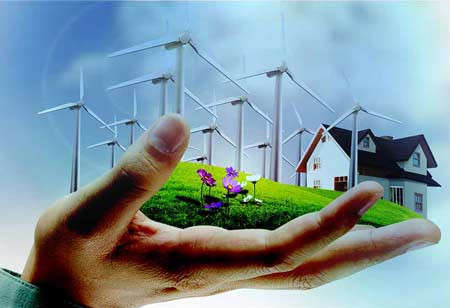Thank you for Subscribing to Energy Business Review Weekly Brief
Renewable Energy Trends Transforming the Energy Sector
The necessity for a quick shift to clean energy is enabling new developments in the renewable sector.

By
Energy Business Review | Friday, June 10, 2022
Stay ahead of the industry with exclusive feature stories on the top companies, expert insights and the latest news delivered straight to your inbox. Subscribe today.
The energy sector is undergoing several changes with the change in consumer demands for clean energy, which is why there are several renewable energy trends that the energy sector is looking up to for sustainable energy production.
Fremont, CA: The necessity for a quick shift to clean energy is enabling new developments in the renewable sector. Businesses and industries turn to renewable energy to cut emissions, lower energy costs and promote environmental stewardship. The primary renewable energy themes are digitization, energy-efficient integrations, and methods to overcome renewable energy production's intermittency. As a result, big data, AI, the Internet of Energy (IoE), and developments in renewable energy sources are gaining traction. Solar, wind, and hydroelectricity are examples of renewable energy that have been around for a long time, but recent developments have made them some of the most popular.
Here are some of the renewable energy trends that are transforming the energy sector:
Advanced photovoltaics
Solar enterprises integrate PV systems into every part of our surroundings, reducing further land-use requirements. As a result, trends such as integrated PV, floatovoltaics, and agrivoltaics are logical. Startups are also developing thin-film cells to make solar panels more flexible, cost-effective, lightweight, and environmentally benign. Emerging firms are developing solutions to concentrate solar power using mirrors and lenses to improve PV performance. PV material advancements, such as the usage of perovskite, are boosting energy conversion by a factor of ten. These advancements are complemented with photovoltaic designs that provide optimal efficiency and output. They work together to promote sustainability by recycling, reducing resource consumption, and utilizing alternative resources.
Distributed energy storage systems
Centralizing renewable energy generation and storage in DESS reduces output variability. Depending on the price and other considerations, startups provide many battery and batteryless options. In contrast to flow batteries, solid-state batteries, which have a high energy density, are light and easy to transport. Applications that demand a large amount of energy in a short period of time can also benefit from capacitors and supercapacitors. In answer to concerns regarding discharge, safety, and environmental pollution, batteryless storage methods, including pumped hydro and compressed air, are being developed. This technique uses Power-to-X (P2X) in order to convert excess energy into other types of energy, such as heat or methane, which may then be used to power other devices.
Hydropower
The energy obtained from moving water is known as hydropower. Hydro energy, unlike solar and wind, is predictable and thus more dependable. In addition, hydroelectric dams and ocean-based energy obtained from tides, currents, and waves provide high energy density while reducing the need for traditional sources of energy. The focus of these renewable energy sources' advancements is on energy converters and component modifications for better energy collection. Hydropower can be generated in a distributed fashion using tidal barrages and small-scale hydroelectric dams. Ocean thermal energy conversion (OETC) utilizes the thermal gradient generated between the surface and deep water to capture energy. A few companies are also trying to turn the difference in osmotic pressure between the ocean and river water, which creates a salinity gradient, into useful electricity.






